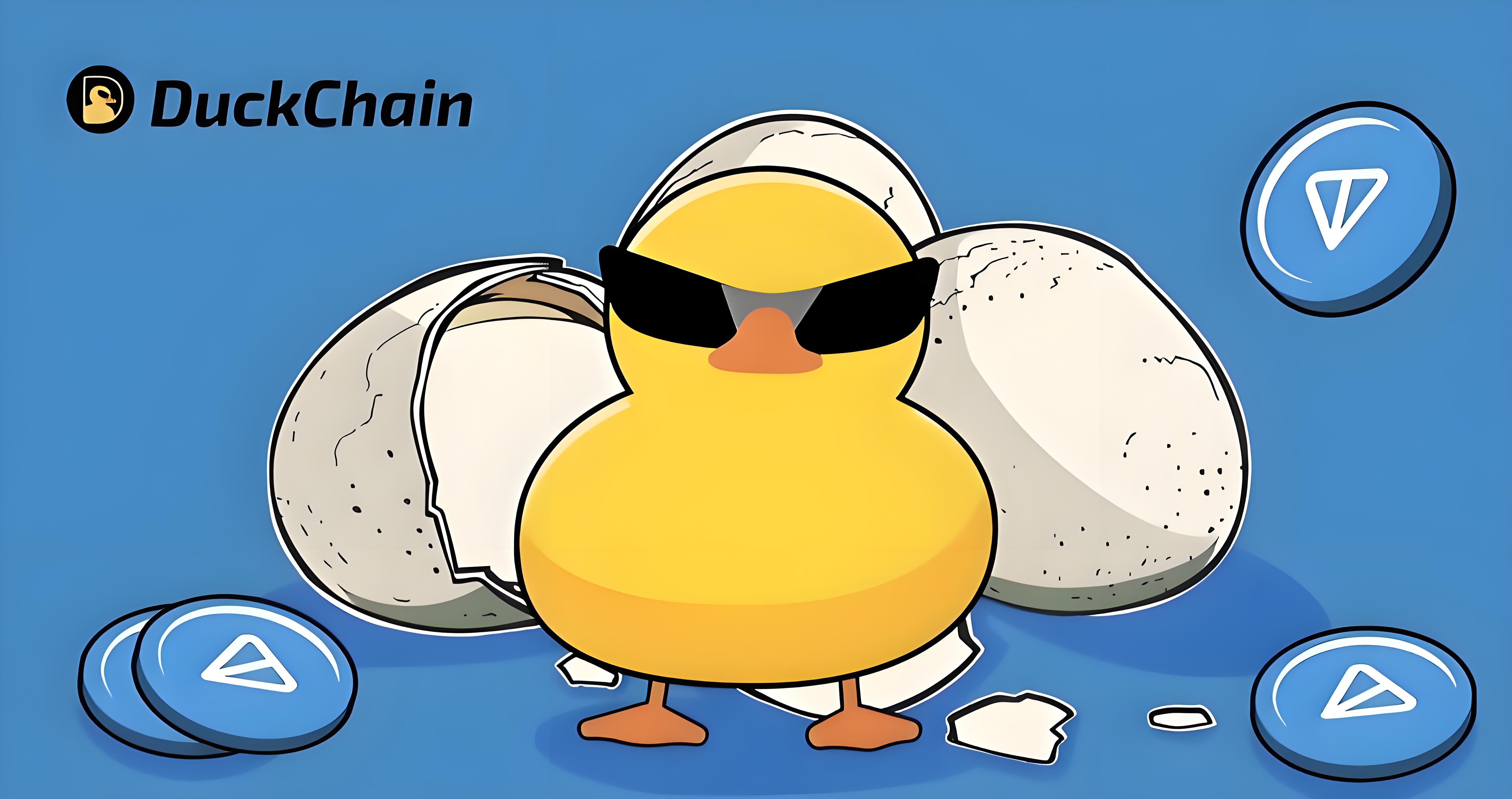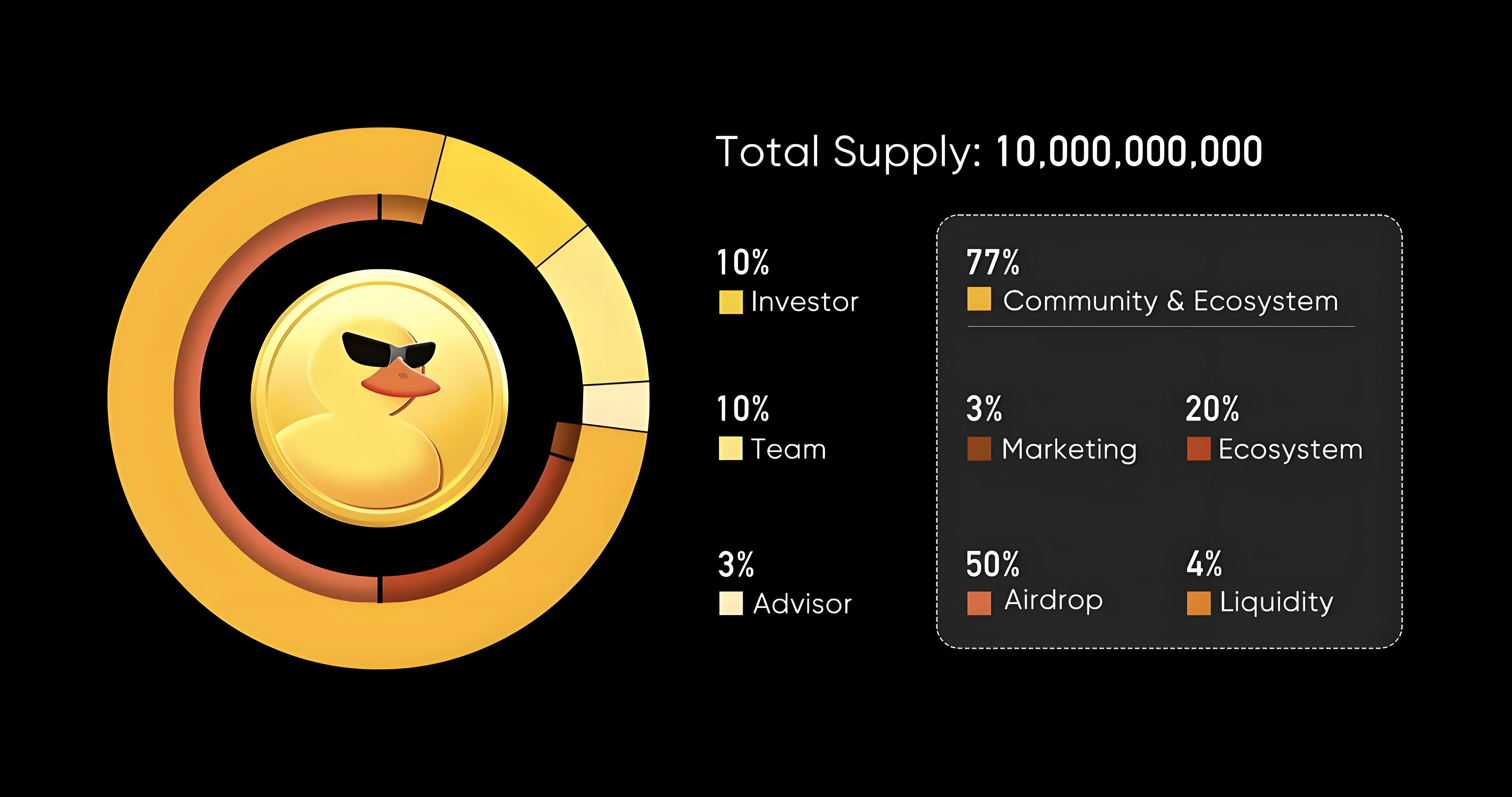In recent years, a large number of projects with the core concept of "consumer chain" have emerged in the blockchain industry, aiming to attract more Web2 users to the Web3 world by lowering the user threshold and simplifying the operation process. As the first consumer Layer project in the TON ecosystem, DuckChain has quickly attracted millions of users with its innovative EVM compatibility and Telegram Star tokenization function.
However, as the project progresses, the feedback from users and the market has become polarized: on the one hand, DuckChain's technological innovation and user growth are impressive; on the other hand, some users question its business model because they were "rebuffed" by participating in activities. We will start from the case of DuckChain to explore the nature of the consumption chain: Is it a pioneer in industry change, or a tool for cutting leeks by changing the shell?

1. DuckChain’s Innovation and Achievements
Technological breakthrough: EVM compatibility and Telegram ecosystem integration
The biggest highlight of DuckChain is its EVM compatibility, which allows developers to use the familiar Solidity language to build applications in the TON ecosystem, greatly reducing the development threshold. At the same time, DuckChain converts Web2 users' points into on-chain assets through the Telegram Star tokenization function, further simplifying the process of users entering Web3. This technical integration not only brings new liquidity to the TON ecosystem, but also provides a seamless on-chain experience for Telegram's one billion users.
User growth and ecological expansion
Since the launch of the testnet, DuckChain has attracted more than 5.3 million users, the number of paying users in the testnet activities has exceeded 1 million, and the on-chain transaction volume has exceeded 29 million. After the launch of the mainnet, the number of active wallets of DuckChain quickly exceeded 1 million, and the on-chain transaction volume exceeded 5 million, showing a strong user growth momentum. In addition, DuckChain has also reached cooperation with well-known projects such as Arbitrum, OKX, and Camelot, further expanding its ecological territory.
Token Economy and Incentive Mechanism
The total amount of DuckChain's token DUCK is 10 billion, of which 77% is allocated to the community and ecological development, including 50% for airdrops and 20% for supporting ecological development. This incentive mechanism aims to attract user participation through airdrops and staking activities, while providing financial support for ecological projects.
2. Behind the users’ “anti-scam”: hidden concerns in the consumption chain
The activity rules are complicated and the cost of user participation is high
Although DuckChain has attracted a large number of users through airdrops and staking activities, some users complain that the activity rules are complicated and the cost of participation is high. For example, users need to pledge a certain amount of assets to receive airdrop rewards, and in the case of large market fluctuations, the value of the pledged assets may shrink significantly, resulting in users' actual returns being lower than expected. This design has been questioned by some users as "cutting leeks in disguise."
Limitations of Telegram Star Tokenization
Although DuckChain's Telegram Star tokenization function lowers the threshold for users to enter Web3, its actual application scenarios are limited. Currently, Telegram Star is mainly used to pay gas fees and participate in on-chain activities, and has not yet formed a wide range of consumption scenarios. This limitation may cause users to doubt the long-term value of the project.
Insufficient ecological liquidity
Although DuckChain is committed to integrating the liquidity of TON, EVM and BTC ecosystems, the DeFi protocols and applications within its ecosystem are still in the early stages and liquidity is relatively insufficient. This liquidity fragmentation problem may limit the actual experience of users and thus affect the long-term development of the project.
3. The nature of the consumption chain: industry change or just a shell-changing trick?
Potential for industry change:
The core goal of the consumer chain is to lower the user threshold through technological innovation and promote the migration of Web2 users to Web3. DuckChain's EVM compatibility and Telegram Star tokenization function are the embodiment of this concept. This compatibility can not only smoothly transition existing Web2 applications to the Web3 ecosystem, but also provide developers with more powerful tool support, improve user experience and application penetration. If the problems of insufficient liquidity and limited application scenarios can be effectively solved, the consumer chain is expected to become a catalyst for the large-scale application of the blockchain industry and promote the comprehensive development of the decentralized economy.
Risks of cutting leeks:
However, the incentive mechanism and business model behind the consumption chain are also prone to abuse. Some projects may attract user funds through complex participation rules and high participation costs, but ultimately cause investors to suffer losses. This phenomenon of "cutting leeks" with high returns as bait and user funds as the cost is not new in the blockchain field. Especially in the absence of effective supervision, it may aggravate irrational speculation in the market and harm the interests of ordinary users. Therefore, how to ensure the transparency and sustainability of the consumption chain mechanism and the protection of user rights and interests, build user trust, and ensure the healthy development of the market has become a key challenge for its future development.
4. DuckChain case enlightenment: Dilemma and solution of consumption chain
The Double-Edged Sword of Token Economic Design

DuckChain's token economic model is the core of its controversy. Although it allocates 77% of tokens to the community (including 50% airdrops, 20% ecological development, etc.), trying to attract user participation through high incentives, according to historical airdrop data, more than 88% of tokens depreciated significantly due to selling pressure within three months after the airdrop. Although this model can quickly accumulate users in the short term, if there is no support from actual application scenarios, the value of the tokens will be difficult to maintain, and ultimately users will be "reverse-robbed" due to shrinking assets. For example, although users in the DuckChain testnet event recharged 9.3 million Telegram Stars, the use scenarios after tokenization were limited to paying gas fees and staking, and failed to form a closed consumption loop.
Distinguishing the Reality and Fiction of Technology Integration
Although DuckChain's technological innovations - such as EVM compatibility, Telegram Star tokenization, and cross-chain liquidity integration - are packaged as "industry changes", the actual implementation effect still needs to be verified. For example, its claim of "integrating EVM, TON and BTC ecosystem liquidity" relies on cross-chain bridges and incentive mechanisms, but the TVL of the TON ecosystem is only US$700 million (90% is TON and USDC), and the underlying support for liquidity integration is weak. In addition, although the development threshold has been lowered through the Arbitrum Orbit architecture, the DApps of the TON ecosystem are still mainly Meme and simple GameFi, lacking complex applications.
Community-driven sustainability challenges
DuckChain's "fun community culture" is the highlight of its user growth. For example, it attracts millions of users through the design of gamified interactions through DuckChainBot. However, this model is highly dependent on short-term incentives, and user retention is questionable. Data shows that although 230,000 users recharged Telegram Star during its test network phase, the growth rate of on-chain transactions slowed down after the main network was launched, indicating that user activity may decline with the end of the airdrop. In contrast, mature consumer chains need to build long-term value capture mechanisms, such as converting user behavior into on-chain productivity through DeFi protocols, rather than relying solely on the "traffic-airdrop" cycle.
5. The future of the consumption chain: from "traffic game" to "value network"
Return to the essence of user needs
The core proposition of the consumption chain should be to lower the threshold for Web3 use and create real demand. DuckChain’s tokenization of Telegram Stars to allow users to “go online without feeling” is an important attempt, but if it only stays at the level of paying gas fees, it is no different from the Web2 points system. In the future, it is necessary to expand the application scenarios, such as using Stars for high-frequency consumption behaviors such as social rewards and content subscriptions, to form a closed loop of “points-consumption-income”.
Technological deepening of liquidity integration
At present, cross-chain liquidity integration mostly relies on bridge protocols, but security and efficiency issues are prominent. If DuckChain wants to truly break the isolation of the TON ecosystem, it needs to explore more basic solutions, such as using ZK technology to achieve lightweight cross-chain verification, or aggregating multi-chain assets through a unified liquidity pool. At the same time, the introduction of real income protocols (such as lending and derivatives) can improve capital utilization and avoid liquidity "false prosperity".
Building a regulatory and compliance framework
The "mass adoption" vision of the consumer chain needs to face regulatory challenges. For example, Telegram Stars as a fiat currency entry may involve KYC/AML issues, and the financial attributes of tokenized points may also be included in the scope of securities regulation. DuckChain needs to cooperate with compliance agencies to explore the integration of on-chain identity and compliant payment channels, rather than relying solely on "regulatory arbitrage."
VI. Conclusion
The case of DuckChain reflects the typical contradictions of the consumer chain track: on the one hand, there is the innovative potential of technology integration and user growth, and on the other hand, there is the risk of token economy bubble and short-term profit-seeking. Its future success will depend on whether the expansion of application scenarios can develop from simple Meme and games to high-frequency demands such as social and financial, the so-called liquidity, whether cross-chain integration can truly improve capital efficiency rather than staying on the surface of account data, and whether its community governance can transform from a "money-pulling party" driven by short-term interests to an active ecological co-builder and participate in long-term value distribution.
If the consumer chain project only "harvests traffic" in the name of "lowering the threshold", it will inevitably become a tool for "changing the shell and cutting leeks"; only by deeply binding technological innovation with user value can it occupy a place in the industry transformation.















